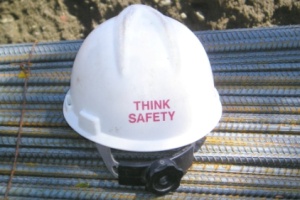 ISHN conducted an exclusive interview with Corrie Pitzer, founder of SAFEmap International, Inc., who presented a talk at ASSE Safety 2014 on “Deep Safe: The Future of Safety Engineering.”
ISHN conducted an exclusive interview with Corrie Pitzer, founder of SAFEmap International, Inc., who presented a talk at ASSE Safety 2014 on “Deep Safe: The Future of Safety Engineering.”
ISHN: Where does the term “Deep Safe” originate from? Why the word “deep”?
Corrie Pitzer: The term deep safe is one that I've developed to describe a safety capability that exists "deep inside" the organization. It refers to an approach where safety is inherent and therefore invisible in the work processes of the business. The typical high-risk work environment (fire fighters, the Marines, the aircraft carrier deck) doesn't think of a business goal and then add safety to it. It is a given in their organization that safety will be achieved, as "high as reasonably achievable." These organizations are able to achieve extraordinary safety, but know that ultimate safety (zero) is not possible. They achieve extraordinary safety not by being good at safety, but by being good at risk -- and by being "risk competent."
What is similar about resilience engineering, as you say, and workplace safety?
Resilience refers to the ability of the enterprise to be able to withstand shocks and failures (accidents) and to grow stronger, more resilient, from it. The term workplace safety doesn’t necessarily include the "to grow stronger from it." Workplace safety is the condition we reach when we are well-defended against failure, but if we are weakened by the random or occasional mishap, one cannot claim resilience yet.
Why is it so difficult for many corporations to make safety “integrated and invisible,” as you say?
The typical safety approach in most organizations has been added on as a result of external pressures or by the need to show a visible focus on safety. It is rather ironic that the very same bolt-on systems we put in place to show our commitment to safety are actually what weaken us.
I also think that we have not really explored the possibility to shift our thinking (the safety profession) in the same way the quality movement of the ‘60s and ‘70s was able to shift and engineer themselves out of existence, so that today quality is an inherent and invisible aspect of the production process.
What can a typical ASSE member do to sell “Deep Safe” to his or her senior leaders? What are the benefits to the corporation, as opposed to a bolt-on safety program?
Deep safe can be sold as an approach that actually enhances and supports the other deep capability of the organization, namely the need to innovate at the shop floor level of the business. The typical bolt-on safety system clearly states that all risk-taking behavior must be "eliminated" or alleviated, but that goal also kills innovation (because innovation comes about when workers push boundaries, experiment and risk new ideas and test alternatives). Risk competency is the prerequisite for innovation and a deep safe approach thrives on that notion.
If Deep Safe takes the level of safety competence beyond metrics, as you say, how do you measure its performance? How do you know how successful it is, or isn’t?
This will require a rethinking of safety metrics, because in the current thinking of the safety profession, the "absence of accidents" is the measurement. That is deeply flawed, because the Titanic had an absence of accidents until the moment it hit the iceberg. It is also the focus on such metrics that drives the organization toward looking for and measuring deck chair incidents, and therefore not being able to see the icebergs.
The measurement of deep safe is also a deep measurement --the level of resilience achieved in the organizational culture (and it is measurable).




